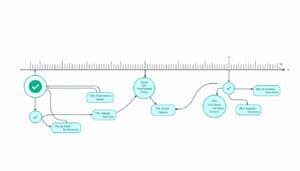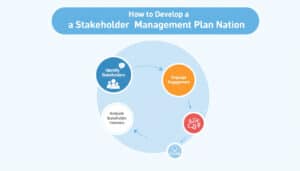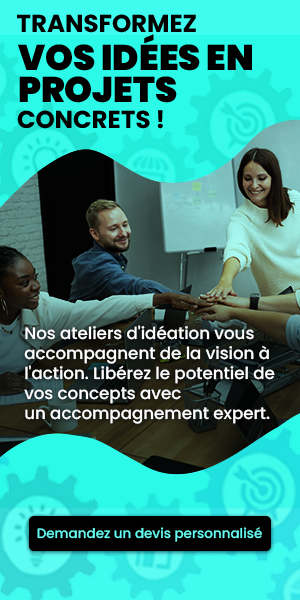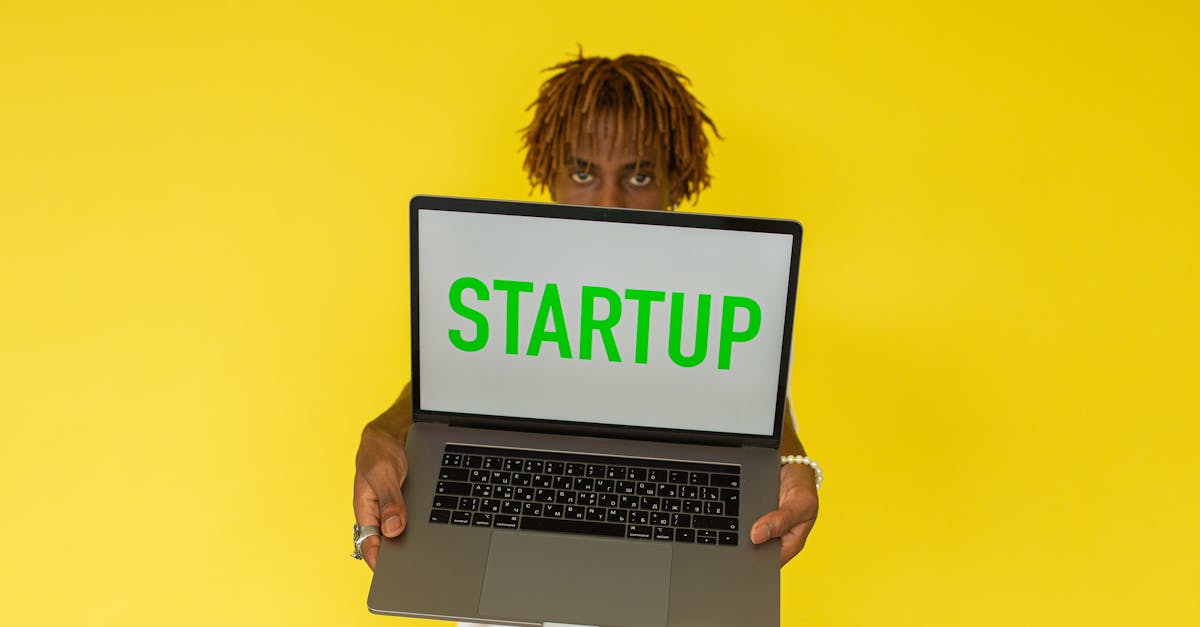Design thinking revolutionizes the way companies approach innovation. By placing humans at the heart of the process, this methodology encourages creative and effective solutions. This article explores the different facets of design thinking and its impact on various industries. You will discover the key steps, inspiring examples, and essential tools to integrate this approach into your projects. Whether you are an entrepreneur, designer, or simply curious, you will find valuable insights to boost your creativity. Dive into the world of design thinking and transform your ideas into innovative realities. Be prepared to explore the power of design thinking and make the most of it.
🔥 Nous recommandons Ideamap
Ideamap est l’outil idéal pour un brainstorming ou un projet collaboratif. Grâce son interface facile et à ses fonctions IA, Ideamap booste votre créativité tout en favorisant une meilleure organisation de vos idées pour atteindre vos objectifs.
The fundamentals of design thinking
Design thinking is a human-centered approach that aims to solve complex problems creatively. This method encourages teams to adopt an empathetic perspective, deeply understanding the needs and desires of users. For example, the company IDEO uses design thinking to develop innovative solutions in various sectors, from technology to healthcare.
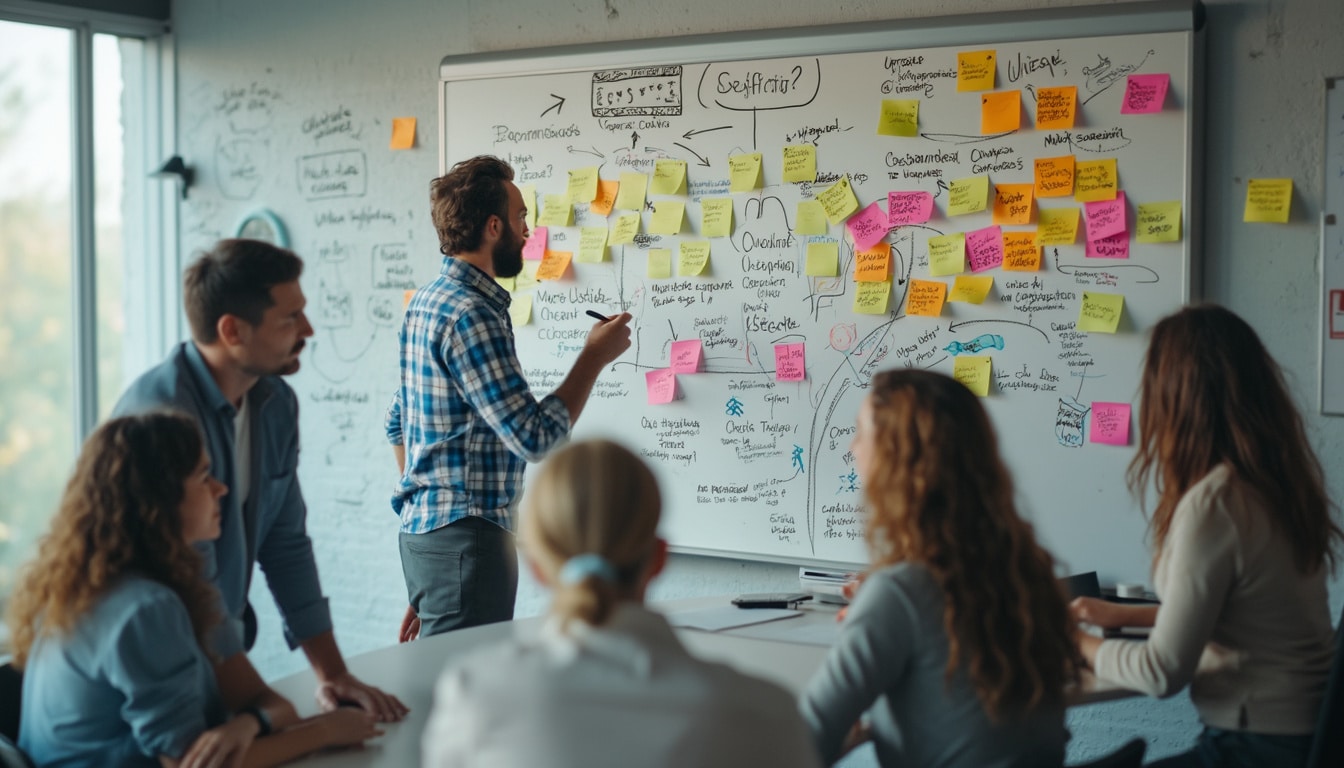
The design thinking process consists of five main steps: empathy, definition, ideation, prototyping, and testing. Each step plays a crucial role in creating effective and tailored solutions. During the empathy phase, designers immerse themselves in the user experience to identify their real needs. This in-depth understanding allows for precise problem formulation during the definition phase.

Then, during the ideation phase, teams generate a wide range of ideas without limitations, thus fostering creativity and innovation. It is at this stage that companies like Frog Design shine by proposing innovative concepts that address identified challenges. Prototyping allows these ideas to be realized in the form of mockups or models, thus facilitating their evaluation and improvement.
The final step, testing, involves direct interaction with users to gather feedback and refine the proposed solutions. This iterative loop ensures that the final product is not only functional but also genuinely suited to the users’ expectations.
By integrating design thinking into their processes, companies can not only innovate more effectively but also create products and services that have a real impact on their users. Renowned institutions like Stanford DSchool offer in-depth training to master this methodology and apply it in various professional contexts.
Key steps of design thinking for successful innovation
To effectively apply design thinking, it is essential to fully understand each of its phases. The first step, empathy, involves immersing oneself in the users’ world. This can be achieved through interviews, observations, or direct immersions. For example, teams at Designit spend a lot of time interacting with users to capture their needs and frustrations.
The next step, definition, involves synthesizing the information gathered during empathy to formulate a clear and precise problem. A good problem definition directs the team’s efforts toward relevant and impactful solutions. Airbnb is an emblematic example. Initially faced with booking issues, the founders redefined their challenge in terms of trust and security between hosts and travelers, which revolutionized their business model.

The ideation phase is crucial for generating a wide array of ideas. It involves fostering an environment where all ideas are welcome, without judgment. Studio Aiko uses this approach to encourage its designers to propose bold and innovative concepts that go beyond conventional solutions.

Prototyping allows the most promising ideas to take form. These prototypes can be physical models, digital mockups, or visual representations that facilitate understanding and evaluation of concepts. The company Frog Design excels at creating rapid prototypes that serve as a basis for successive iterations.
Finally, the testing phase involves submitting prototypes to real users to gather their feedback. This step is essential for refining solutions and ensuring they genuinely meet the identified needs. Through repeated cycles of prototyping and testing, teams can perfect their innovations and maximize their impact.
By mastering these five steps, companies can structure their innovation processes effectively and systematically, thereby ensuring relevant and sustainable results.
Design thinking is not just a method; it is a culture that encourages curiosity, openness, and collaboration. By adopting this approach, organizations can successfully navigate through complex challenges and emerge with solutions that are both innovative and deeply human.
Concrete applications of design thinking in various industries
Design thinking finds diverse applications in many sectors, transforming how companies approach innovation. In the healthcare field, for example, the children’s hospital in Los Angeles used design thinking to enhance the experience of young patients. By incorporating virtual reality visits, they successfully reduced children’s anxiety during their hospitalizations.

The financial sector is no exception. A large bank adopted design thinking to reinvent customer experience. By mapping the customer journey, it identified and resolved friction points in the mortgage application process, reducing application processing time by 30%. This user-centered approach not only improved customer satisfaction but also optimized the bank’s internal operations.
In the educational field, a university used design thinking to increase student engagement. By closely collaborating with students and teachers, they co-created a program focused on solving real-world problems, leading to a significant increase in student participation and satisfaction.
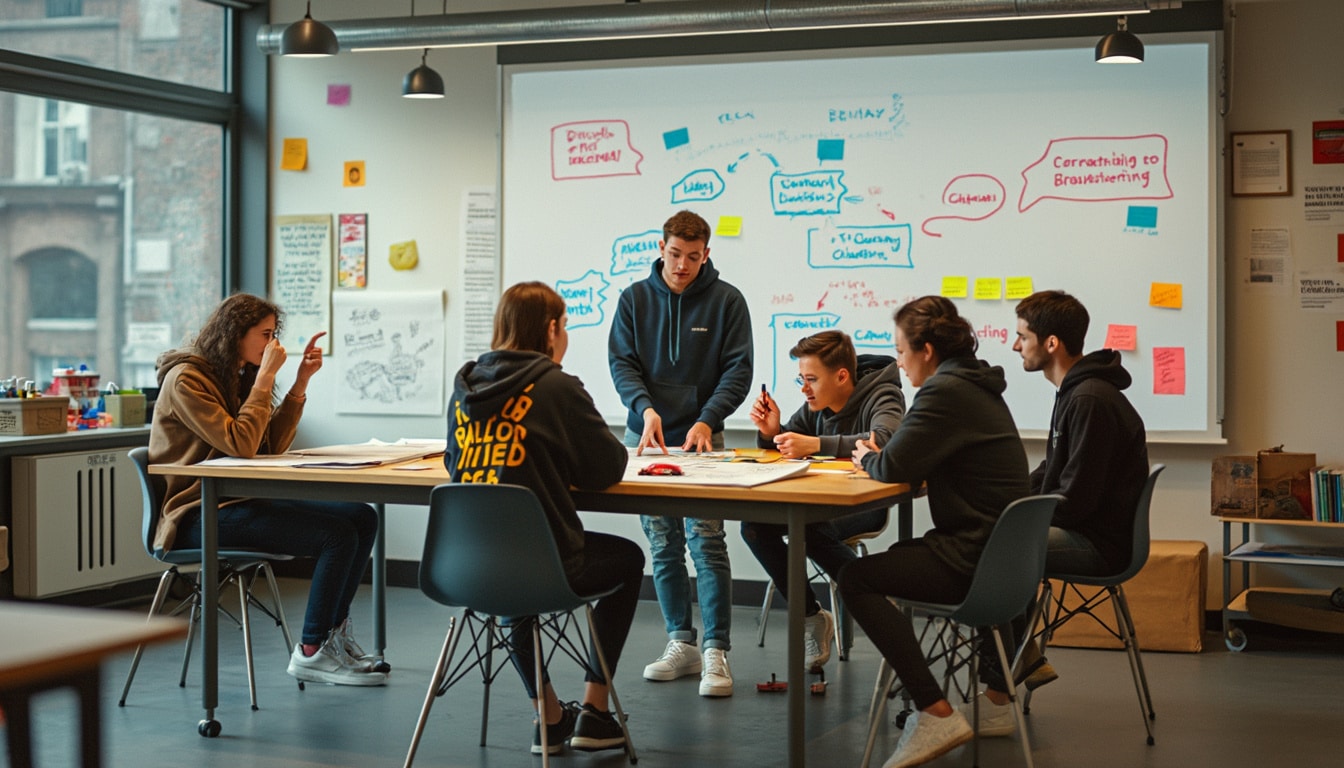
The retail sector has also benefited from design thinking. A chain of stores facing competition from online platforms organized design thinking workshops to rethink the in-store experience. The result: the introduction of interactive product demonstrations and community events, thereby increasing foot traffic and customer loyalty.
Finally, in the automotive industry, a company integrated design thinking to develop a range of innovative electric vehicles. By focusing on environmental concerns and user needs, they created cars equipped with solar charging capabilities and mobile applications to locate charging stations, thus establishing a new standard in the industry.
These examples illustrate the versatility and effectiveness of design thinking as a catalyst for innovation in various contexts. By adopting a user-centered approach, companies can not only address complex problems but also create solutions that truly add value to their users and society.
To learn more about the application of design thinking in your sector, explore the available resources on Plus Que Pro Solution or discover inspiring case studies on Juwa.
Essential tools and techniques for design thinking
The success of design thinking relies heavily on the use of appropriate tools and techniques that facilitate each step of the process. One of the most commonly used tools is mind mapping, which allows structuring ideas and visualizing the relationships between them. By combining mind mapping with techniques like brainstorming, teams can generate a wide range of ideas in a short time.
Personas are also essential for design thinking. They are fictitious representations of target users, based on real data and thorough research. Personas help teams stay focused on users’ needs and goals throughout the design process. For example, the Hasso-Plattner Institute uses detailed personas to guide its innovation projects.
Service blueprinting is another key technique that allows mapping the entire user journey, identifying all touchpoints and interactions with the service or product. This method helps identify improvement opportunities and ensures a smooth and consistent user experience.
Rapid prototyping is an indispensable technique for turning ideas into reality. By using tools like 3D printing, designers can create tangible models of their concepts in just a few hours. This allows for quick evaluation and frequent iterations, thus accelerating the development process.
Finally, user testing is essential for validating prototypes and gathering valuable feedback. By observing users’ interactions with the prototype, teams can identify strengths and aspects to improve, ensuring that the final product truly meets users’ expectations.
By mastering these tools and techniques, design thinking professionals can optimize every step of the innovation process, ensuring effective and relevant results. To deepen your knowledge, consult detailed resources on Manager GO or explore the comprehensive guides available on Designit.
The use of these tools is not just about methodology; it is also about organizational culture. Encouraging an open and collaborative mindset is essential to fully leverage the benefits of design thinking. Companies like Eureka Design and Milan Design have succeeded in integrating these practices into their DNA, thus fostering continuous and sustainable innovation.
In conclusion, the tools and techniques of design thinking are essential for structuring and energizing the innovation process. By integrating them coherently and strategically, teams can transform innovative ideas into concrete and impactful solutions.
Integrating design thinking into your organization
Integrating design thinking into an organization requires a structured approach and commitment at all levels. The first step is to train teams on the principles and methods of design thinking. Organizations like Haskn offer specialized training programs that help companies effectively adopt this methodology.
Next, it is crucial to create an environment conducive to collaboration and innovation. This involves breaking down organizational silos and encouraging cross-functional communication. By bringing together individuals from diverse backgrounds, teams can benefit from varied perspectives and enrich the creative process. Atelier 2.0 is an example of a studio that promotes this diversity, enabling richer and more relevant innovation.
It is also important to adopt iterative practices, favoring rapid cycles of prototyping and testing. This enables continuously refining solutions based on user feedback and market developments. For example, Frog Design incorporates frequent iterations into its projects, ensuring constant adaptation to client needs.
The implementation of digital tools can also facilitate the integration of design thinking. Collaborative platforms like Miro or Trello allow teams to manage their projects in an organized and efficient manner, even remotely. These tools promote transparency and smoothness in the innovation process, making design thinking accessible to all members of the organization.
Finally, it is essential to measure the impact of design thinking initiatives. By defining key performance indicators (KPIs) and tracking progress, companies can assess the effectiveness of their efforts and adjust their strategies accordingly. Tomorrow Ideation offers methods to evaluate the impact of design thinking on innovation and organizational performance.
To ensure the sustainability of the integration, it is recommended to promote a culture of innovation within the organization. This involves recognizing and rewarding innovative initiatives, creating time dedicated to reflection and experimentation, and encouraging calculated risk-taking. Designit exemplifies this culture by valuing continuous innovation and supporting its teams in their creative endeavors.
In conclusion, integrating design thinking into an organization takes time, resources, and strong commitment. However, the benefits in terms of innovation, user satisfaction, and overall performance are well worth it. By adopting a structured approach and using the right tools, companies can transform their way of thinking and creating, thus paving the way for sustainable and significant successes.

Challenges and solutions when adopting design thinking
Adopting design thinking within organizations is not without challenges. One of the main obstacles is often resistance to change. Teams may be reluctant to abandon traditional methods in favor of a more iterative and collaborative approach. However, this resistance can be overcome by demonstrating the tangible benefits of design thinking through pilot projects and initial successes.
Another major challenge lies in the understanding and appropriation of design thinking principles by all team members. It is essential to provide adequate training and create an environment where experimentation is encouraged. Resources like Tomorrow Ideation offer practical guides to facilitate this understanding and help teams effectively adopt this methodology.
Cross-functional collaboration can also pose challenges, particularly in terms of communication and managing different perspectives. To address this, it is essential to foster a culture of transparency and active listening. Collaborative tools like Miro facilitate coordination and synergy among team members, making the innovation process smoother.
Time and resource management also represents an important challenge. Design thinking often requires rapid iterative cycles that can seem demanding in terms of time and resources. To optimize this process, it is recommended to adopt agile project management techniques, allowing efficient task distribution and ensuring continuous progress without overburdening teams.
Moreover, integrating user feedback can sometimes slow down the innovation process if not managed well. It is crucial to structure feedback sessions so that they are constructive and relevant, avoiding information overload. The Hasso-Plattner Institute offers structured methods for gathering and analyzing feedback, thereby ensuring smooth integration into the design process.
Finally, aligning organizational objectives with the principles of design thinking can pose strategic challenges. It is essential to ensure that design thinking initiatives align with the company’s overall vision and goals. Strategic alignment sessions and collaborative workshops can help harmonize these objectives, thus ensuring maximum coherence and relevance in innovation projects.
By proactively addressing these challenges and implementing suitable solutions, organizations can overcome the obstacles to adopting design thinking and fully reap its benefits. The key lies in continuous commitment, adequate training, and the use of the right tools to support the innovation process.
For more advice on managing challenges related to design thinking, check out the articles available on Travailler Chez Soi and Tomorrow Ideation.
The future of design thinking and emerging trends
Design thinking continues to evolve, adapting to new technologies and societal changes. One of the major trends is the integration of big data and artificial intelligence into the design thinking process. These technologies allow for a deeper understanding of users’ behaviors and needs, thus enriching the empathy and definition phases.
Another important trend is the rise of sustainable design thinking. With a growing awareness of environmental issues, companies are increasingly integrating sustainable practices into their design processes. This includes developing eco-friendly products, reducing waste, and optimizing resource use.
Design thinking is also increasingly used in the public sector and public policies. Governments are adopting this approach to improve public services and more effectively address citizens’ needs. For example, cities like Helsinki have used design thinking to rethink their transportation and waste management systems, thus improving the quality of life for their residents.

Cross-sector collaboration is also becoming an essential component of design thinking. By bringing together experts from diverse fields, teams can approach problems from multiple angles, thus fostering more innovative and holistic solutions. Initiatives like Milan Design encourage this collaboration by organizing events and workshops that gather professionals from different backgrounds.
Finally, the rise of virtual design thinking workshops enables distributed teams to collaborate effectively despite distance. Platforms like Atelier 2.0 provide tools and virtual environments that facilitate brainstorming sessions, prototyping, and feedback, making design thinking accessible to a global audience.
By integrating these emerging trends, design thinking constantly adapts to the evolutions of the modern world. This flexibility ensures that the methodology remains relevant and effective, allowing companies and organizations to continue innovating and addressing current and future challenges.
To stay at the forefront of design thinking trends, explore the resources available on Tomorrow Ideation and Triode.
FAQ on design thinking
1. What is design thinking?
Design thinking is a human-centered problem-solving methodology. It consists of five stages: empathy, definition, ideation, prototyping, and testing, aimed at creating innovative solutions tailored to the actual needs of users.
2. What are the benefits of design thinking for a company?
Design thinking allows companies to innovate more effectively by emphasizing user needs. It fosters creativity, enhances cross-functional collaboration, and enables the development of products and services that genuinely meet market expectations, thus increasing customer satisfaction and loyalty.
3. How to integrate design thinking into an organization?
Integrating design thinking requires training teams, creating a collaborative environment, and adopting suitable tools and techniques. It is also important to promote a culture of continuous innovation and iterative practice of design thinking concepts in projects.
4. What are the main steps of design thinking?
The five steps of design thinking are: 1. Empathy, 2. Definition, 3. Ideation, 4. Prototyping, 5. Testing. Each step plays a key role in understanding users’ needs and creating innovative and effective solutions.
5. What tools are recommended for design thinking?
Commonly used tools include mind mapping, personas, service blueprinting, rapid prototyping, and user testing. Collaborative platforms like Miro and Trello also facilitate teamwork and the organization of ideas.






